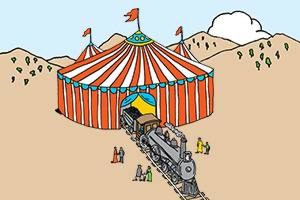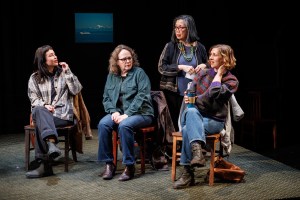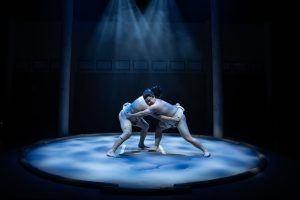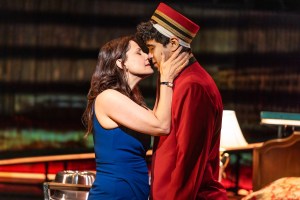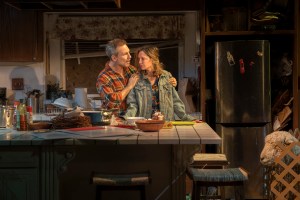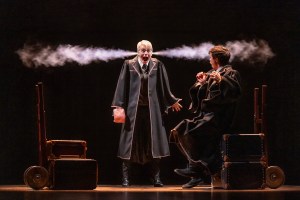Camille A. Brown Stomps Down Stereotypes in Kirsten Childs's New Musical
The choreographer takes on racism, sexism, and more in Bella: An American Tall Tale as she looks ahead to Broadway.
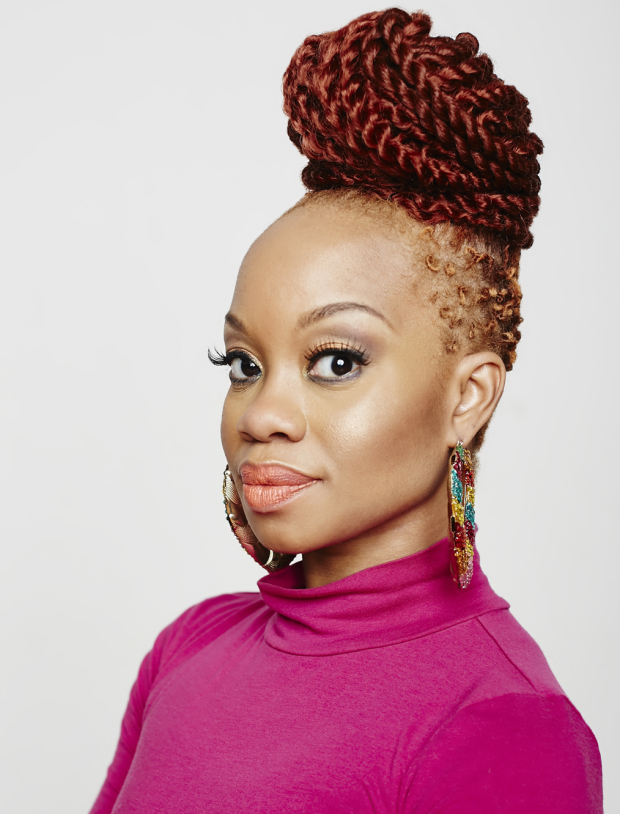
(© Whitney Browne)
“I always say choreography came to me by way of rejection,” says Camille A. Brown, the choreographer for Kirsten Childs’s new musical, Bella: An American Tall Tale, as well as the upcoming Broadway revival of Lynn Ahrens and Stephen Flaherty’s Once on This Island. As a child, Brown loved putting dance routines together long before she knew there was such a thing as choreography, but she knew she loved dancing, so that’s what she pursued as a teen and college student. Her talent, however, was sometimes overlooked because, she says, there were those who thought her body type made her “not the ideal dancer.”
Undeterred, she moved into the realm of choreography and dove deeply into researching cultural dances. After working for many years as a choreographer and winning numerous accolades along the way, Brown founded her own company, Camille A. Brown & Dancers.
Brown’s versatility is currently on full display at Playwrights Horizons in Bella, which she worked on with director Robert O’Hara. The hilarious and socially charged satire takes on issues of racism, sexism, and body image from the perspective of a young black woman named Bella, played by Ashley D. Kelley, who discovers her beauty and individual strength as she makes her way across America and Europe in the 1870s.
What was it about Bella that sparked your interest?
Kirsten and Robert sent me the script, and I loved it because it was based around stereotypes — and she was indicting those stereotypes. That’s what I do in my own work. Their script spoke about the black woman’s body, and I think sometimes the black woman’s story is either dismissed or it is wrapped around something that is very stereotypical. She was providing me with a great opportunity to tell that story of objectification but also of self-acceptance too. Because you have to fight to own yourself in the midst of what people are saying and doing around you.
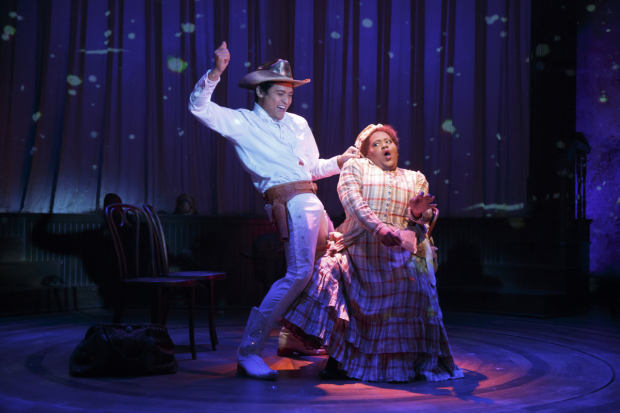
(© Joan Marcus)
Can you talk a little about the way you incorporate social dance into the choreography for Bella?
I love social dances, and that’s actually what I studied. That’s one of the reasons I loved doing this work, because it gives me an opportunity to do different social dances and pull from different cultures. For example, Miss Cabbagestalk, a character in the show, does the cakewalk. The cakewalk was actually started by enslaved Africans, and they did it as a means of resistance. They were basically mimicking the “masters” and making fun of them, and the masters had no idea they were doing that. So the dance was eventually used for entertainment. When people say, “Oh, I love the cakewalk,” I ask, “Do you know the roots of the cakewalk?” Many people don’t. So when Miss Cabbagestalk does the cakewalk, that’s rooted in history.
Kirsten uses a wide range of musical genres in this work. Was it a challenge to choreograph for such a diverse score?
It was a responsibility more than a challenge — to make sure that I was coming from a sound place, because I’m pulling from other cultures. The question of ownership — we think about social dances, specifically African-American social dances and the cultural appropriation of those social dances. It was about me reclaiming them and putting them in the place they deserve to be. So it’s more of a responsibility to do that. The thing that I loved about doing Bella was that it showed my versatility, that I have a humorous side, a very serious side, and a very political side as well.
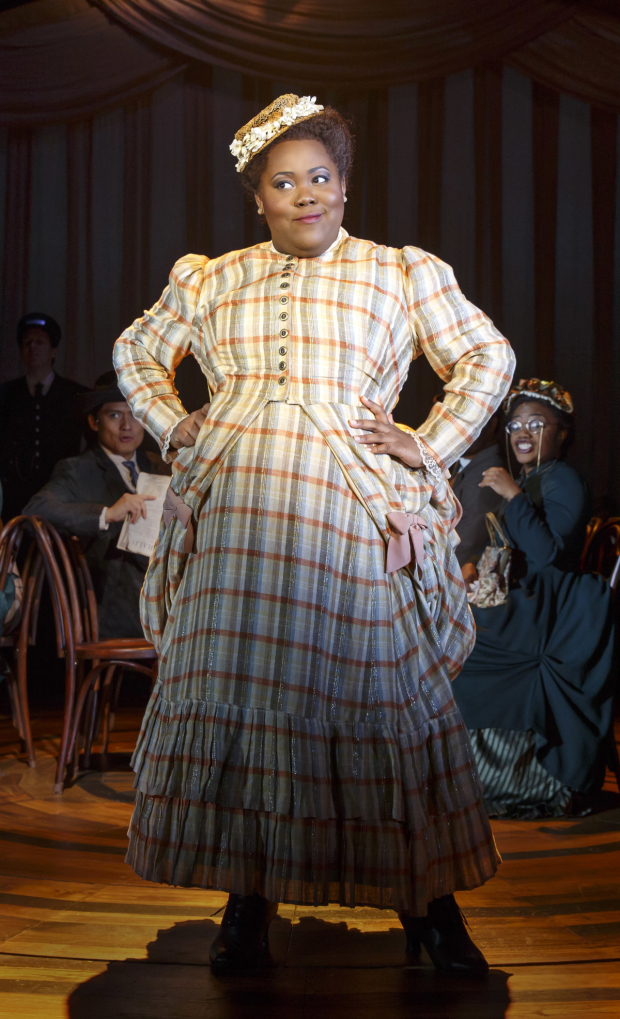
(© Joan Marcus)
Bella takes place in the 1870s. How do you incorporate modern dance moves into a period piece like this?
Robert wanted the number “Don’t Start No Sh*t” to hint at step dancing. So the challenge was that it is a period piece, and you don’t want to push it too much, where it looks like you’re randomly putting some step dancing in there. You want to be clear about where you are during time periods. Each time period, people move completely differently. The way people were moving in the ’20s is not how they were moving in the ’60s, and it is not how they are moving now. So I had to figure out that middle ground where I could play with the stepping and could hint at something that was more present but still honor the past as well. That’s the challenge when we’re re-creating period pieces: How can you make a dance from the past fresh and new, but still give people what they want? That’s where the choreographer’s voice comes into play.
If the show’s music were taken away, could your choreography tell Bella’s story all on its own?
I should hope so! [laughs] Because I am a storyteller. So I create movement that hopefully tells the story and supports what the playwright and director are doing, but it has its own character as well. The dance tells its own story. I’m working on my own musical that is driven by dance only, so I’m looking at how dance lives on its own.
What one word would you use to describe the show?
“Courage.” I think any time you’re talking about race, you have to build your bravery. For example, I can’t be reserved with the song “White People Tonight” because if Kirsten’s putting it out there like that, then I have to do the same with the movement. Bella is a satire about race, so the bravery that that takes is something to be commended.
You’re going to choreograph Once on This Island on Broadway later this year. Have you started thinking about how you’ll approach it?
My focus with the show is on creating something that is authentic and honest and, again, finding that balance between placing the richness of African culture within this musical. I want to lift up the movement of African culture in a beautiful, visual, visceral way. It’s very exciting. When I announced that I was doing Once on This Island, I listed all the black females who have choreographed for Broadway on social media, and so many people said they didn’t know that history. I’m standing on their shoulders and carry the legacy of their contributions to Broadway with me. It’s important to honor it. And I want young black women to look at me and say, “I can do that too.”

(© Joan Marcus)


